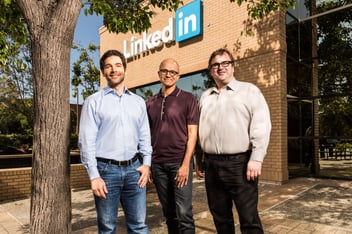What LinkedIn’s Economic Graph Brings to Microsoft Dynamics and the World
Last month LinkedIn unveiled its plan to build the world’s first economic graph.
For now its building blocks will come from the data of its 450 million members, as they create and maintain their professional profiles, build and engage with their networks, publish and consume content, join groups, peruse and pursue jobs, and update their skills on LinkedIn’s new learning platform. LinkedIn Learning combines content from its 2015 Lynda.com buy with insights gleaned from LinkedIn’s professional network data and delivers recommendations on what courses from over 9,000 might help you stay on top of your field.
The possibilities of identifying impactful, actionable insights from tracking all of those interactions are huge. Ultimately LinkedIn aims to have a profile for every one of the word’s 3 billion workers and every company on the planet. And once Microsoft completes its $26.2 billion acquisition of LinkedIn in a few months’ time, the economic graph will gain access to the data gleaned from the 1.2 billion Microsoft Office users worldwide.
The graph will offer unparalleled opportunities, unlocking insight about companies and the individuals inside them in the context of our working lives.
The Fourth Industrial Revolution
LinkedIn plans to use all of this data to help people identify and obtain the skills they will need to work in the future economy. There is urgency in connecting intellectual, human and economic capital because, according to the World Economic Forum, technology will displace five million of today’s jobs by 2020. More startling, 78 percent of CFO’s believe that technology will replace up to a quarter of today’s jobs in that same period. The fourth industrial revolution is building and both LinkedIn and Microsoft believe they are in the right place to lift and transform the global economy.
Rise of the Machines
Microsoft’s investment in machine learning is also gathering pace. In a speech week at their rcecent annual IT conference, Microsoft’s CEO, Satya Nadella, emphasised Microsoft’s overarching goal of “democratising artificial intelligence”, where the mountains of data now available are presented as intelligent findings to people who have far less time than they used to have.
Cortana, Microsoft’s digital assistant, will ultimately be the face and voice of how we interact with big data, moving beyond LinkedIn’s announcement of a bot that can schedule meetings for you to a world where Cortana predicts the behaviour of organisations and workers. Imagine Cortana priortising a sales person’s tasks by scheduling a phone call into a potential prospect based on content they’ve consumed, groups they’ve joined or skills they’ve acquired. Or consider a similar scenario with an organisation – ultimately made up of the individual behaviour of its employees – where Cortana identifies a new demand for products or services.
The Synergy to Transform Productivity?
Microsoft aims to reinvent productivity and business processes. To achieve this bold ambition, Microsoft recognises they need to create a more connected professional world, with LinkedIn being the digital home of the global workforce. With LinkedIn Microsoft can help people find new jobs, build skills, sell, market and get work done.
This combination makes it possible for new experiences, such as LinkedIn’s news feeds that serve up articles based on the project you are working on, and Office suggesting an expert to connect with via LinkedIn to help with a task you’re trying to complete. In response to a question on a conference call about the acquisition news, Nadella said that LinkedIn’s talent recruiter solutions would “naturally expand into Microsoft Dynamics,” and that would be one of the first things the combined company will do.
Crimson is an IT solutions company that helps midsize businesses work smarter and more quickly reach business-led outcomes from its IT programmes. As part of our commitment to the industries we work in, we offer complimentary Art of the Possible workshops to help leadership teams explore what these technological developments mean to them. You can learn more about the workshops here.


